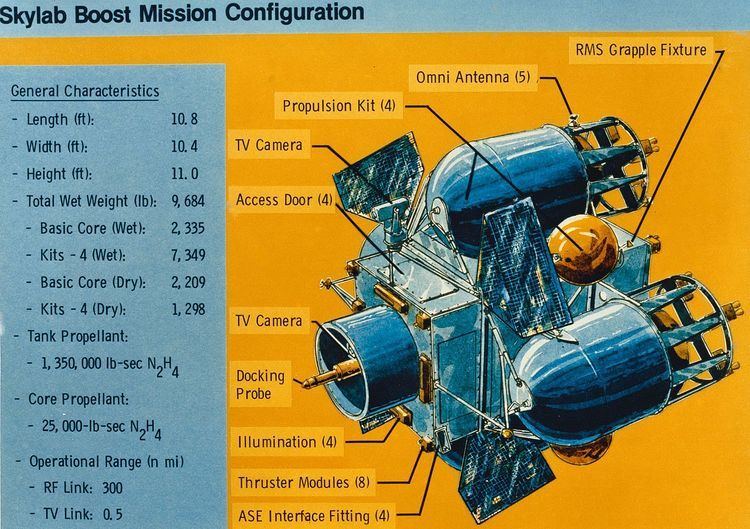 | ||
Teleoperator Retrieval System was a robotic spacecraft designed to be capable of remote payload observation and boosting or de-orbiting another spacecraft, and it was developed to potentially re-boost Skylab space station to a higher orbit. After the third manned mission to Skylab, plans were made to boost the station into a higher orbit to extend its service life or to de-orbit it into a remote ocean area. A remotely controlled booster rocket was to be carried up in the Space Shuttle's third mission. Astronaut Jack R. Lousma described the remote booster as "as big as a truck" and requiring a control system able to match the circular motion of the Skylab docking port. The core of TRS was a propulsion system that could accommodate additional fuel modules. It had a 24 nozzle 6-axis control thruster system to support Space rendezvous, docking, and orienting the spacecraft.
Other options for launching TRS were Titan III or Atlas Agena. Some launch options might have required two launches. Martin Marietta proposed the Titan III for launching TRS. The Titan IIIC could carry 29, 600 lbs to low Earth orbit.
The TRS was ordered in October 1977 to be ready for use in late 1979. The TRS had two major possible uses, to either re-boost or de-orbit Skylab. The decision whether to use TRS was planned to be made in 1979.
Although TRS was initiated in 1977, it made use of developments in tele-operation going back to the 1960s. In addition, another reason for its selection was the long-term use for task in general including "payload survey, stabilization, retrieval and delivery missions, recovery and re-use capability.."
The TRS project was overseen by the NASA Marshall Spaceflight Center.
Some surrounding events were a predicted timeline that the Shuttle would be ready by 1979, and Skylab would not re-enter until the early 1980s. Another factor was that in 1975, it was decided not to launch a second Skylab (there was another) would not be launched;this gave a boost to Skylab re-use plans. As it was, the Shuttle was not ready until the early 1980s, and Skylab decayed in 1979.
Parts of the core, a box-like structure at center:
The core was surrounded by four strap-on propulsion modules, which include an additional propellant tank with its own rocket engines.
